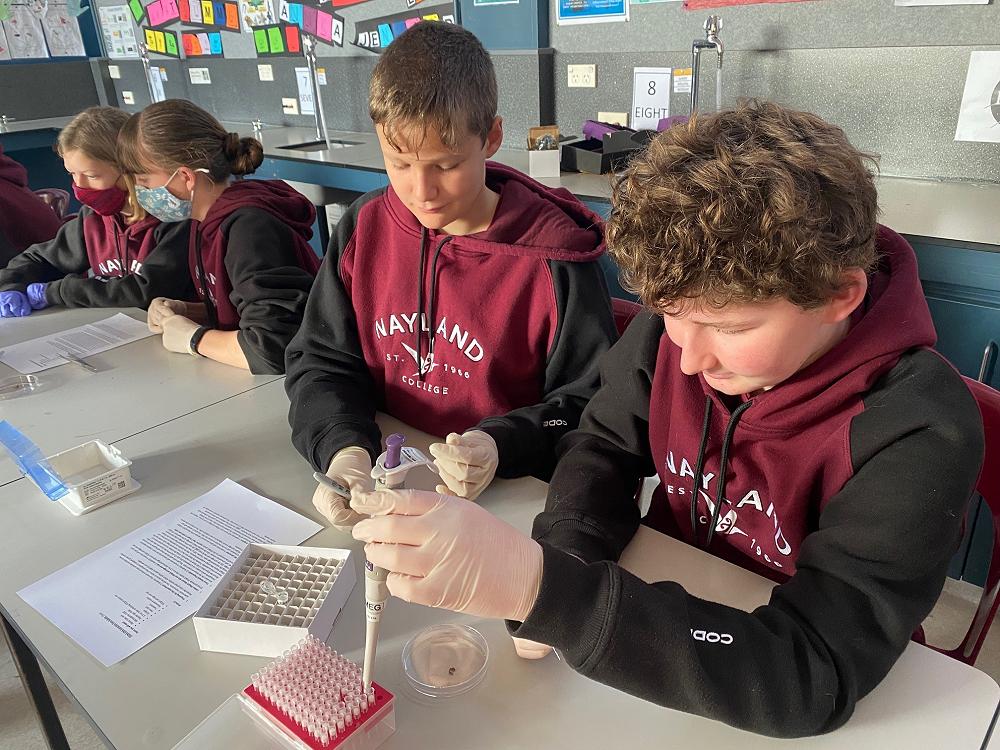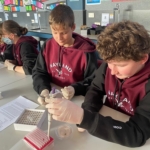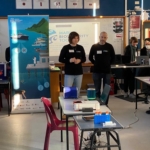In Science, 9X2 are learning about how to use environmental DNA (eDNA) as a way to detect marine pest invaders in the ocean.
As part of this unit, the class had scientists Xavier Pochon, Anastasija Zaiko and Michelle Scriver from the Cawthron Research Institute visiting them in the school lab. During a two-hour long science lesson, the students were using cutting edge technology to extract DNA from the tissue of a marine pest, the Mediterranean fanworm (Sabella spallanzanii) and DNA from the fluid surrounding the fanworm.

This fanworm is a threat to our natural marine habitats as it a very efficient filter feeder and it spreads very quickly. It is present in the Auckland harbour and is rapidly making its way down to the South Island.

After extracting the DNA, the students carried out a process called qPCR to see if just taking a water sample would be an effective way to detect the fanworm. Results are still being analysed. However, if the technique works, we would be able to detect the presence of this invasive fanworm long before any sightings of it and hopefully before it has caused any harm to our natural marine habitats.

Xavier Pochon, Anastasija Zaiko and Michelle Scriver are all parts of the Marine Biosecurity Toolbox – a large group of New Zealand scientists who collaborate on ways to detect marine invading pests so we can protect our native marine environment and preserve its commercial, cultural, and recreational values.

James Nikitine from the Blue Cradle company came along for the day to film the students in action as he is making a documentary about the mahi that Xavier and Anastasija are doing in conjunction with the Marine Biosecurity Toolbox.
By Gerd Banke



